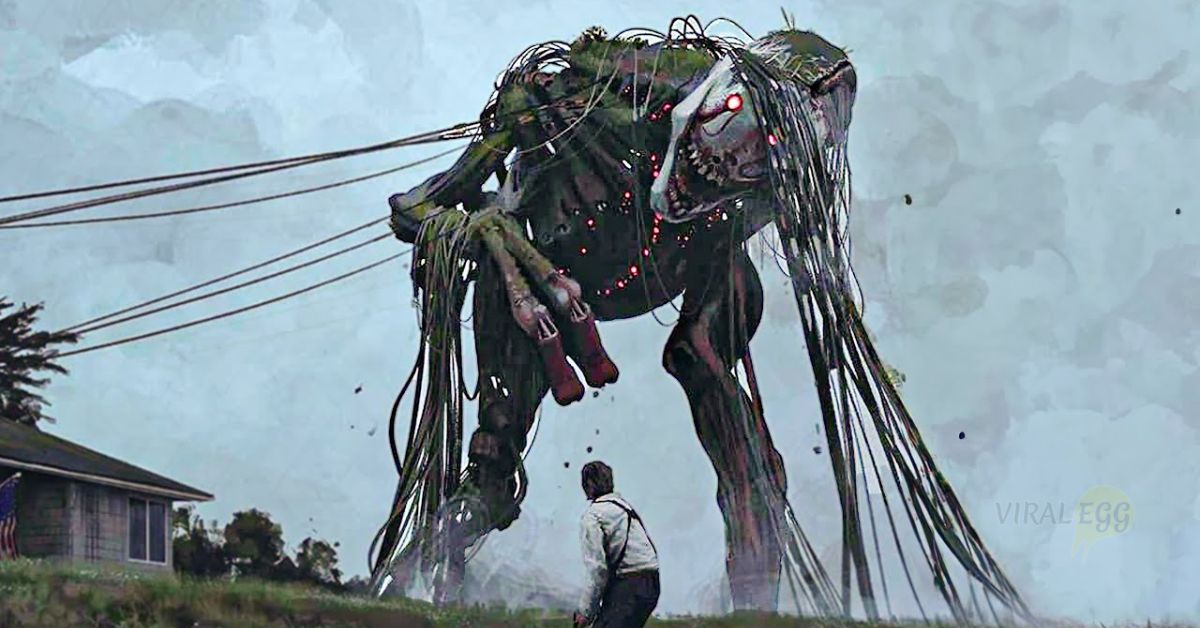Simon Stålenhag’s The Electric State is a haunting mix of dystopian storytelling and stunning artwork. Its eerie landscapes and emotional depth have earned it a cult following. But how does The Electric State movie vs book compare? Fans are eager to see how Hollywood translates Stålenhag’s vision, but adaptations always come with changes. Let’s break down the major differences between the book and the movie.
The Electric State Graphic Novel: A Quick Overview
Before we dive into The Electric State Netflix adaptation changes, let’s take a quick look at the source material.
- Who is Simon Stålenhag? A Swedish artist and storyteller known for blending 1980s nostalgia with dystopian sci-fi.
- What makes The Electric State unique? It’s a visual narrative, combining breathtaking artwork with a minimalist but deeply emotional story.
- Key Themes: Nostalgia, technology’s decay, isolation, and a post-apocalyptic road trip feel.
- Story Summary: A teenage girl and her robot companion travel across a crumbling America, surrounded by decayed technology and eerie, drone-like figures. The world feels abandoned yet disturbingly alive.
The book’s strength lies in its moody artwork and subtle storytelling, which begs the question: How The Electric State movie differs from the book?
The Film Adaptation: Major Differences
1. Visual Aesthetic and Worldbuilding
Stålenhag’s artwork is a signature element of The Electric State. The film has a massive challenge: bringing those surreal, melancholic landscapes to life.
- The book’s muted, painterly aesthetic has a dreamlike quality. Does the film capture that, or does it lean too much into CGI spectacle?
- The abandoned, rusted machinery and ominous drones are crucial to the book’s mood. Are they as eerie on screen?
- How much of the book’s quiet, empty world remains, or does Hollywood overpopulate it with extra details?
From early visuals, it looks like the film remains faithful to Stålenhag’s world, but there are bound to be some adjustments.
2. Plot Adaptations and Narrative Changes
Graphic novels often tell their stories differently than movies. Some plot changes are expected.
- Expanded Dialogue & Backstory: The book relies on sparse text and visual storytelling. Will the film add more dialogue and explanations?
- Changes in the Ending: If Hollywood alters the climax to be more dramatic or optimistic, it could shift the story’s entire emotional weight.
- New Characters or Subplots: Movies often add side characters or subplots to fill screen time. Will this enhance the story or dilute its intimacy?
Fans of the novel might be most nervous about how much the quiet, introspective tone of the book is changed to fit mainstream cinema.
3. Tone and Themes: Does the Film Capture the Book’s Essence?
The book’s emotional weight comes from its loneliness and understated storytelling. Does the film stay true to that?
- Dystopian Melancholy vs. Action Sci-Fi: Does the adaptation preserve the book’s slow-burn, eerie atmosphere, or does it lean into high-energy action?
- Thematic Depth: The book is about more than just a road trip in a ruined world—it’s about loss, disconnection, and the remnants of technology. Is that still front and center in the film?
The tone is arguably the most critical element of adaptation. If the movie over-explains or rushes the emotional beats, it might miss the mark.
4. Character Interpretations and Casting Choices
Characters often evolve in adaptations. Here’s what we’re watching for:
- Casting: Do the actors match the personalities and emotional depth of their book counterparts?
- Character Arcs: The book gives minimal backstory. Will the film expand on the girl’s motivations and past?
- Robot Companion: One of the most compelling elements of the book is the girl’s bond with her robot. Does the film capture that relationship, or does it play second fiddle to action sequences?
If the film focuses too much on spectacle and not enough on the characters, it risks losing the heart of the story.
Reception and Fan Reactions
How Are Fans Responding?
Adaptations can be divisive. Here are some early reactions:
- Book Fans: Concerned about whether the film stays true to Simon Stålenhag’s The Electric State.
- New Audiences: Curious about the unique world but may expect more conventional storytelling.
- Critics: Likely to compare it to past dystopian films like Blade Runner 2049 or Children of Men.
Expect passionate debates on whether the film respects the book’s quiet brilliance or turns it into just another sci-fi blockbuster.
Final Verdict: Which Version Stands Out?
So, book or movie—which does it better?
- If you love deep, introspective storytelling and haunting visuals, the book remains unmatched.
- If the film nails the tone and visuals, it could be a worthy adaptation.
- If Hollywood over-simplifies or over-explains, fans might walk away disappointed.
Ultimately, The Electric State is an experience best appreciated in both formats. The book for its artistry and mood, the film for its cinematic immersion.
FAQ: The Electric State Adaptation
Q. Is The Electric State movie different from the book?
Yes, while the film stays true to the book’s core themes, it expands on character arcs and dialogue to fit a cinematic format.
Q. What are the biggest changes in The Electric State Netflix adaptation?
Expect more backstory, possible new characters, and a shift in tone to fit a wider audience.
Should I read The Electric State before watching the movie?
Absolutely! The book’s unique visual storytelling adds depth that might not fully translate to the screen.
Conclusion
The Electric State adaptation is one of the most anticipated sci-fi films of the year. While changes are inevitable, the real test is whether it stays true to Simon Stålenhag’s The Electric State haunting atmosphere and emotional depth.
What do you think? Will the film do the novel justice, or will it miss the mark? Let us know in the comments! 🚀
Welcome to ViralEgg—where news meets fun! We bring you the latest trends, breaking stories, and viral moments across news, tech, entertainment, and more. No fluff, just the good stuff. Stay in the loop and enjoy the scroll!

